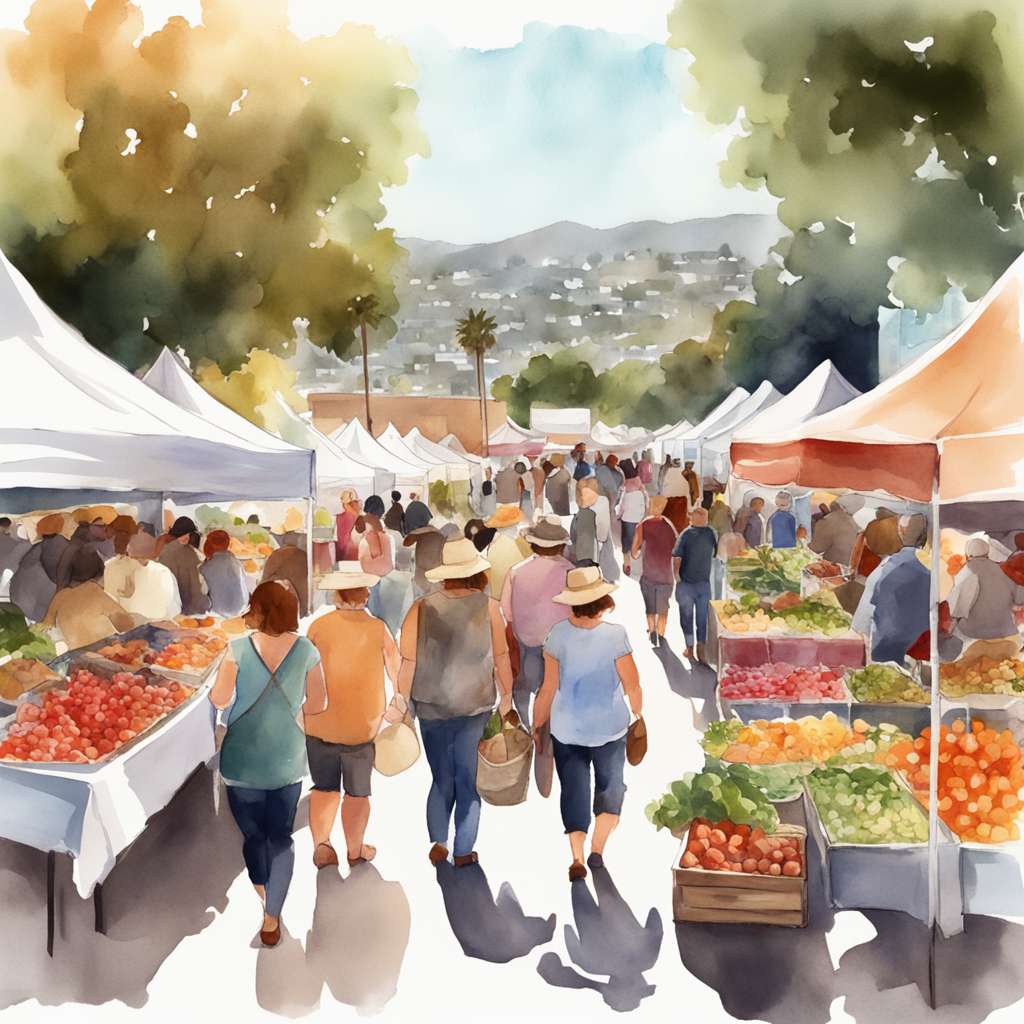
The hollywood farmers’ market: a community pillar facing financial challenges
- The Hollywood Farmers' Market, established in 1991, is a cornerstone for fresh produce in Los Angeles.
- There are now almost 700 state-certified farmers markets across California, highlighting the growing demand for organic foods.
- A new membership initiative aims to raise $12,000 monthly to support the market amid rising operational costs.
The Historical Significance of the Hollywood Farmers’ Market
The Hollywood Farmers’ Market, situated at the crossroads of Ivar and Selma avenues, has been a vital part of Los Angeles’ communal fabric since it commenced in 1991. This marketplace was established well before Whole Foods and Erewhon became icons of organic and health-conscious lifestyles. At a time when there were only a few farmers markets across California, this one set a precedent by providing fresh, organic produce to Los Angeles locals. Over three decades, the desire for fresh and unprocessed food has skyrocketed, leading to almost 700 state-certified farmers markets last year alone. Thanks to its lively ambiance and varied offerings, the Hollywood Farmers’ Market has expanded to be the largest in Los Angeles, accommodating over 160 vendors.
- Love how the market fosters community spirit... 😊...
- The operational costs are too high, unsustainable... 😡...
- Have we considered alternative funding sources like... 🤔...
The Challenges Facing the Market
Notwithstanding its historical importance and fame, the Hollywood Farmers’ Market is grappling with monetary difficulties that threaten its survival. The not-for-profit entity responsible for its management, Food Access LA, operates multiple other markets across the region, such as those in Echo Park, Compton, and Watts-Willowbrook. For the first time since its founding, the organization has initiated a membership drive to secure essential funding to maintain these markets. Executive Director Jennifer Grissom emphasized that the market’s funding largely relies on grants and vendor fees. However, inflation has driven up operational expenses, including the costs of portable restrooms and security measures to guarantee a safe and pleasant experience for visitors.

The Impact of Weather and Economic Factors
The financial challenges facing the market have been worsened by the region’s erratic weather patterns, such as prolonged rain and recent heatwaves, which have deterred both sellers and patrons. Initially, the market benefited from a temporary increase in funding through government COVID-19 relief programs, but this support has diminished over time. The first-ever membership initiative aims to gather $12,000 monthly through donations so that the financial strain isn’t placed on farmers and vendors. Grissom is optimistic that the community will unite to support the market, as its closure would not only impact access to local and nutritious food but also eliminate a crucial source of revenue for farmers.
Our Advice on the City
The Hollywood Farmers’ Market is more than a venue for acquiring fresh produce; it’s also a community focal point that builds connections between farmers and consumers. Travelers visiting Los Angeles occasionally can experience the city’s lively culture and dedication to sustainability by exploring this market. It’s a chance to savor locally grown produce and support small-scale farmers directly. For seasoned nomads, navigating the market might offer insights into the local economy and underscore the significance of backing community-centered projects.
Ultimately, the Hollywood Farmers’ Market serves as a symbol of Los Angeles’ commitment to healthy living and civic engagement. Whether you’re discovering it for the first time or are a frequent visitor, delving into the stalls of this market promises a deeper understanding of the city’s ethos and the hurdles local farmers face. As you browse the stands, contemplate the impact of your purchases and the part you play in supporting this critical establishment.
Trending now








